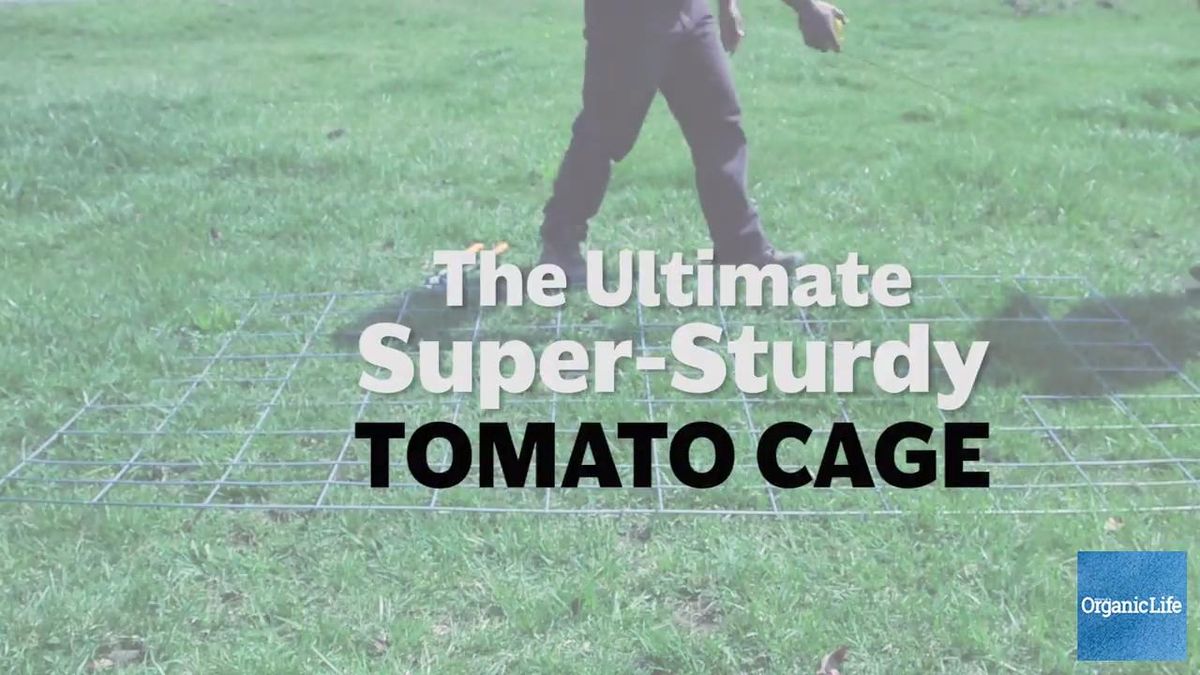You've diligently cared for your tomatoes since they were tiny baby seedlings way back in early spring. Now it's finally time to reap the rewards, but things aren't quite going as planned and you've only harvested two measly tomatoes. There's no question a tomato crop gone wrong is a huge disappointment, but the good news is that it's possible to save it. We reached out to Darryl Dressler, a horticulture educator at the Penn State Extension, for some help troubleshooting common tomato-growing errors. Here are some of the mistakes he sees all the time and how to fix them. (Attention tomato enthusiasts: Check out Rodale's Epic Tomatoes, the ultimate guide to growing more than 200 varieties!)
Your Pot Is Too Small
Tomatoes are one of the easiest plants to grow in a container garden, but you won't have much success if you don't pick the right pot. Dressler recommends planting a single tomato plant in a container that's 14-20 inches in diameter. "It will look like there is too much space when the plant is small, but try to picture what it will look like at maturity," he says. (See how easy it is to make your own upside-down tomato planter.)
You're Watering From Above
Bacterial and fungal diseases are common woes for many home gardeners. Dressler says some diseases thrive in wet, warm conditions, while others prefer wet and cool. Either way, it's best to avoid wetting the plant's leaves when you water to prevent disease from striking. He recommends soaking the soil directly, rather than watering overhead or misting the plants. Watering in the morning is a good idea, too, because it gives wet leaves a chance to dry during the day.
You're Not Watering Consistently
Do your beautiful heirloom tomatoes have cracks in them? Dressler explains that tomatoes split when they receive a lot of water after a stretch of hot weather. Watering consistently and at the soil level can help prevent this. However, be aware that overwatering can spell trouble, too, since tomatoes don't like soggy soil. Dressler recommends giving them 1-1.5 inches of water each week. (Never store tomatoes—and these 8 other foods—in the fridge.)
You’re Not Giving Them Enough Calcium
Discovering all of your tomatoes are developing blossom end rot can be a huge disappointment. But Dressler says it's actually completely avoidable and easy to correct. "Blossom end rot is a result of a calcium deficiency that often happens during drought conditions (beware these soilborne diseases). Without water, the plant isn't able to absorb the calcium from the soil," he explains. However, sometimes the problem is that there isn’t enough calcium in the soil in the first place. You can correct it by applying an organic fertilizer supplemented with calcium, or go the DIY route and work crushed eggshells into the soil.
You Didn’t Test Your Soil
Having the correct soil pH is hugely important to having a successful harvest, but it's something that many home gardeners tend to overlook. Tomatoes, like many garden veggies, needs a slightly acidic soil that's between 6.0-6.5 on the pH scale. If it's too high or low, your plants won't be able to absorb nutrients from the soil correctly. "The best indication that the pH is off is a yellowing of the leaves on the top or bottom of the plant," Dressler says. (Here are 10 easy soil tests you can do yourself.)
You’re Forgetting To Fertilize
If your tomatoes have "green shoulders" (the tops of the fruits don't turn red), it's a sign your plants aren't getting enough potassium. If you pay close attention to fertilizer bags, you'll always see a nitrogen-to-potassium ratio listed. According to Dressler, tomatoes should have between 2 and 4 times more potassium than nitrogen to thrive.













